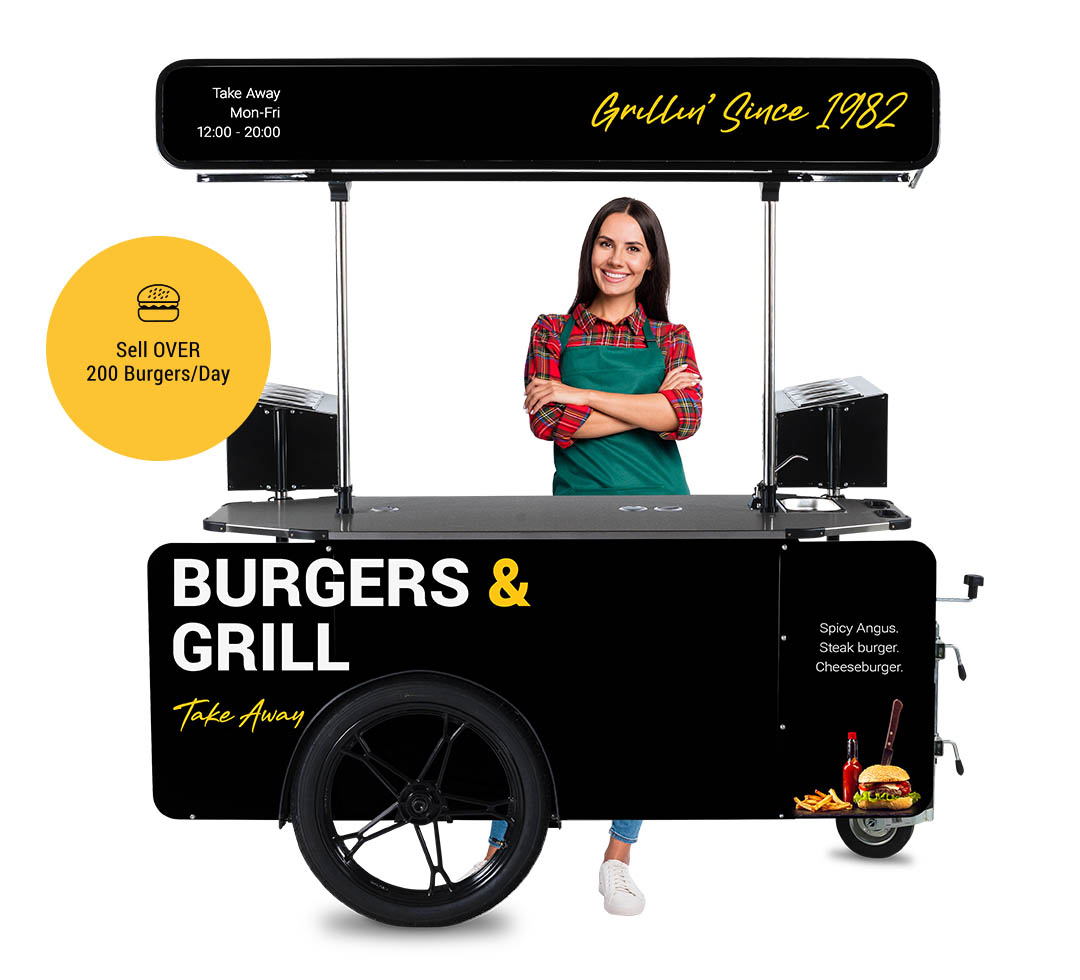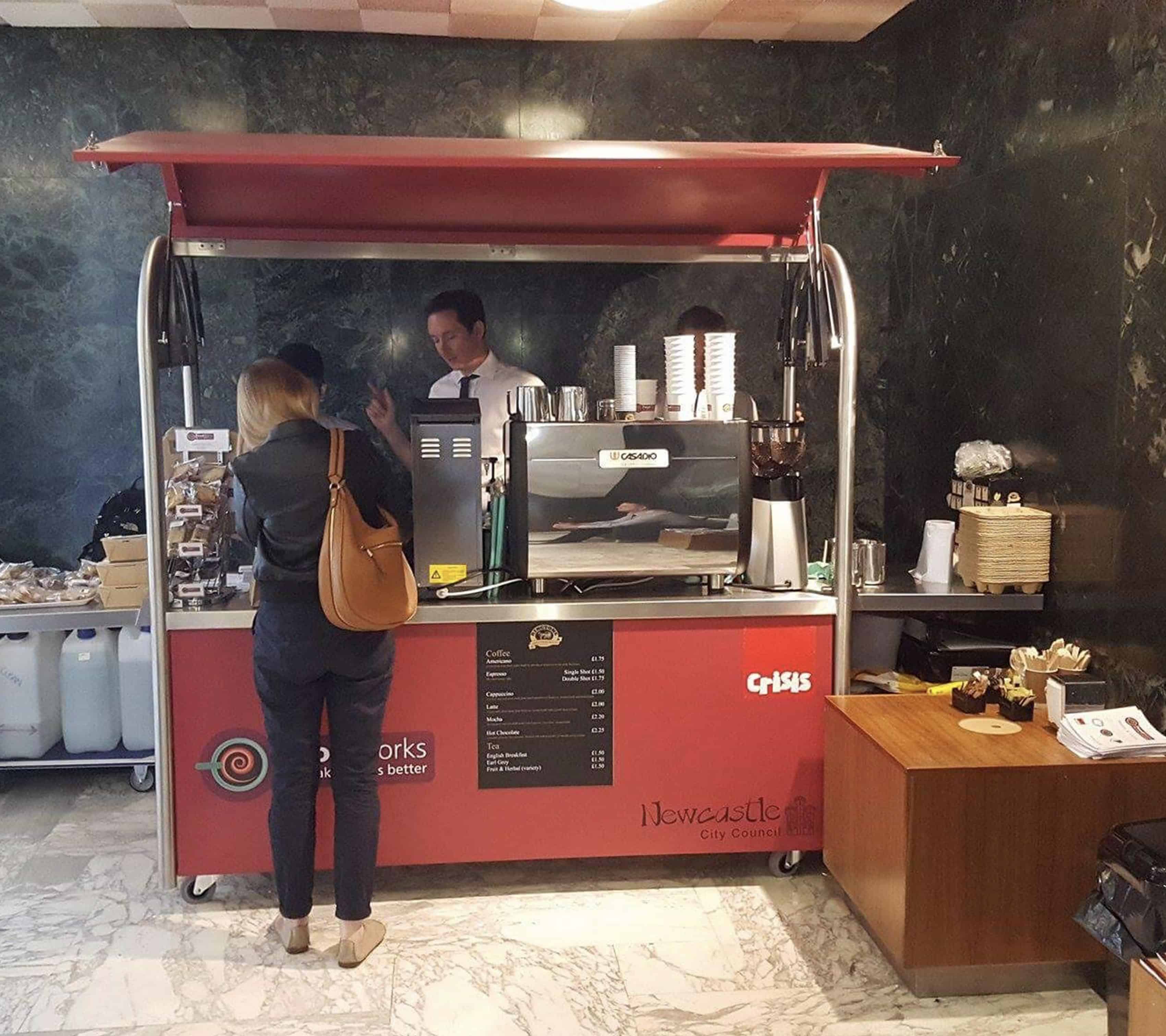Street food carts have become an integral part of urban landscapes, tantalizing taste buds with a kaleidoscope of flavors and aromas. From humble beginnings, these culinary havens have evolved into gastronomic destinations, offering a vibrant and affordable way to experience the world’s diverse cuisines.
In this comprehensive guide, we delve into the fascinating world of street food carts, exploring their history, culinary innovations, business aspects, and cultural impact. Get ready for a delectable journey that will leave you craving for more.
Introduction
Street food carts are a cornerstone of urban culture, offering a unique and flavorful way to experience a city’s culinary scene. These mobile eateries have a long and storied history, dating back to ancient times when vendors would sell food from carts or stalls in marketplaces.
Today, street food carts are a global phenomenon, found in cities around the world. They offer a wide variety of cuisines, from traditional dishes to innovative creations, and are often a more affordable and convenient option than dining in a restaurant.
History and Evolution
The origins of street food carts can be traced back to ancient Greece, where vendors sold food from carts in the agora, or marketplace. In medieval Europe, street food carts were common in fairs and festivals, and by the 18th century, they had become a staple of urban life in many cities.
The 19th and 20th centuries saw the rise of modern street food carts, as new technologies and transportation methods made it easier for vendors to move their carts around and serve a wider range of customers. Today, street food carts are a vital part of the urban food scene, offering a delicious and affordable way to experience a city’s culinary culture.
Types of Street Food Carts
Street food carts come in various forms, each with its own unique characteristics. These carts can be classified based on cuisine, specialization, and mobility.
Cuisine-Based Carts
Cuisine-based carts specialize in a particular type of cuisine, such as:
- Mexican: These carts offer tacos, burritos, quesadillas, and other Mexican dishes.
- Italian: Pizza, pasta, and sandwiches are common offerings from Italian street food carts.
- Asian: A wide variety of Asian cuisines are represented in street food carts, including Thai, Chinese, Japanese, and Korean.
Specialization-Based Carts
Specialization-based carts focus on a specific type of food or drink, such as:
- Hot dog carts: These carts offer hot dogs with a variety of toppings.
- Ice cream carts: These carts sell ice cream in various flavors and toppings.
- Coffee carts: These carts offer coffee drinks, tea, and pastries.
Mobility-Based Carts
Mobility-based carts are designed for different levels of mobility:
- Fixed carts: These carts are permanently located in a specific spot.
- Mobile carts: These carts can be moved to different locations throughout the day.
- Pop-up carts: These carts appear at specific events or locations for a limited time.
Business Aspects
The financial aspects of street food carts involve understanding startup costs, licensing, and operational strategies. These factors impact the overall profitability and sustainability of the business.
Startup costs for street food carts vary depending on the type of cart, equipment, and location. They typically include expenses for the cart itself, cooking equipment, supplies, inventory, and permits.
Licensing
Licensing is essential for operating a street food cart legally. The specific requirements vary by municipality, but generally involve obtaining a business license, health permit, and possibly a vendor’s permit. Compliance with health and safety regulations is crucial for maintaining the cart’s reputation and ensuring the well-being of customers.
Operational Strategies
Successful street food cart operations depend on efficient strategies for menu planning, pricing, customer service, and marketing. Menu planning should consider popular dishes, local tastes, and cost-effectiveness. Pricing should be competitive while ensuring profitability. Excellent customer service is vital for building a loyal customer base.
Marketing efforts, such as social media presence and community involvement, can help increase visibility and attract customers.
Challenges and Opportunities
Running a street food cart business presents both challenges and opportunities. Challenges include weather conditions, competition, and regulatory compliance. However, the opportunity for growth and profitability can be significant, especially in areas with high foot traffic and demand for convenient and affordable food options.
Culinary Innovations: Street Food Cart

Street food carts have become a hotbed for culinary innovation, offering unique and mouthwatering dishes that challenge the boundaries of traditional cuisine.
These carts cater to diverse tastes, introducing flavors and ingredients from around the world, and contributing to the ever-evolving culinary landscape.
Fusion Fare
Street food carts are renowned for their fusion creations, blending elements from different cultures to create tantalizing new dishes. For instance, the Korean-Mexican fusion cart “Kogi” has gained immense popularity with its tacos featuring bulgogi and kimchi.
Gourmet Street Food
The rise of gourmet street food carts has elevated the culinary offerings available on the streets. These carts offer high-quality ingredients, innovative techniques, and sophisticated flavors, blurring the lines between fine dining and casual street food.
Plant-Based Options
In response to the growing demand for plant-based cuisine, street food carts are offering an array of vegan and vegetarian dishes. From savory jackfruit tacos to refreshing acai bowls, these options cater to the dietary preferences of a wider audience.
Sustainability and Innovation
Street food carts are also embracing sustainability in their culinary innovations. Many carts use eco-friendly packaging, source ingredients locally, and adopt waste reduction practices. This commitment to sustainability enhances the overall appeal of street food while promoting a greener future.
Cultural Impact
Street food carts are cultural melting pots that have a profound impact on local food culture. They provide a platform for culinary experimentation, preservation of traditional recipes, and fostering community engagement.
Street food vendors often use locally sourced ingredients, reflecting the region’s culinary traditions. They adapt traditional recipes to suit modern tastes, creating a vibrant and ever-evolving food scene. By offering affordable and accessible meals, street food carts promote inclusivity and provide a sense of community.
Preservation of Traditional Recipes
- Street food carts often specialize in traditional dishes that have been passed down through generations.
- They play a vital role in preserving these recipes and ensuring their continued relevance in modern times.
- For example, in Mexico, street vendors sell authentic tacos and tamales, preserving the country’s rich culinary heritage.
Cultural Exchange
- Street food carts facilitate cultural exchange by introducing new flavors and ingredients to different communities.
- Immigrant vendors bring their culinary traditions to their new homes, enriching the local food scene.
- For instance, the popularity of food trucks in the United States has led to the widespread availability of cuisines from around the world.
Health and Safety

Operating a street food cart requires adherence to strict health and safety regulations. These regulations ensure the food served is safe for consumption and that the environment is sanitary.
Food hygiene is paramount. Street food vendors must maintain high standards of cleanliness, regularly washing their hands, surfaces, and equipment. Proper food storage and handling practices are essential to prevent foodborne illnesses.
Sanitation
- Street food carts must have access to clean water for handwashing and sanitizing.
- Proper waste disposal systems are crucial to prevent contamination and maintain a clean environment.
- Regular cleaning and disinfection of the cart, equipment, and utensils are essential to prevent the spread of bacteria.
Responsible Waste Disposal
Street food vendors have a responsibility to dispose of waste responsibly. Improper waste disposal can attract pests, contaminate the environment, and pose health risks. Vendors must adhere to local regulations regarding waste separation and disposal.
Marketing and Branding
In the competitive world of street food, establishing a strong brand and implementing effective marketing strategies are crucial for success. Here are some key strategies that street food carts can leverage:
Social Media Marketing, Street food cart
Social media platforms offer a cost-effective way to connect with potential customers, showcase menu items, and build brand awareness. By creating engaging content, running targeted ads, and fostering online communities, street food carts can reach a wider audience and drive sales.
Online Ordering Platforms
Online ordering platforms allow customers to place orders conveniently from their smartphones or computers. This not only streamlines the ordering process but also provides valuable data on customer preferences, enabling street food carts to optimize their menu and marketing efforts.
Creative Signage
Eye-catching signage is an essential tool for attracting attention and conveying the brand’s personality. By using vibrant colors, unique fonts, and creative imagery, street food carts can create a memorable and recognizable brand that stands out in the crowd.
Future Trends

The street food cart industry is constantly evolving, with new trends and innovations emerging all the time. Some of the most notable trends include:
- The use of technologyto improve efficiency and customer service. For example, some food carts are now using mobile ordering apps and GPS tracking to make it easier for customers to find them.
- The growing popularity of healthy and sustainable food options. Customers are increasingly looking for food that is both delicious and good for them. Food carts are responding to this demand by offering more plant-based and locally sourced dishes.
- The rise of food trucks. Food trucks are larger than traditional food carts and offer a wider variety of menu options. They are also more mobile, which allows them to reach a wider audience.
The Future of Street Food Carts in Urban Environments
The future of street food carts in urban environments is bright. As cities become more crowded and people become more time-pressed, the demand for convenient and affordable food options will continue to grow. Food carts are well-positioned to meet this demand, as they offer a unique and affordable way to experience a variety of cuisines.
In addition, the growing popularity of healthy and sustainable food options is likely to benefit street food carts. As more people become aware of the importance of eating healthy, they will be more likely to seek out food carts that offer healthy and affordable options.
Question & Answer Hub
How do I start a street food cart business?
Starting a street food cart business requires careful planning, including menu development, equipment acquisition, licensing, and operational strategies. Research local regulations, identify a niche, and secure funding before embarking on this culinary adventure.
What are the challenges of running a street food cart business?
Street food cart businesses face challenges such as weather conditions, competition, and regulatory compliance. Adaptability, resilience, and a passion for food are essential qualities for navigating these obstacles.
How do street food carts contribute to culinary innovation?
Street food carts are often at the forefront of culinary innovation, experimenting with flavors, ingredients, and cooking techniques. They provide a platform for chefs to showcase their creativity and cater to the evolving tastes of urban diners.
